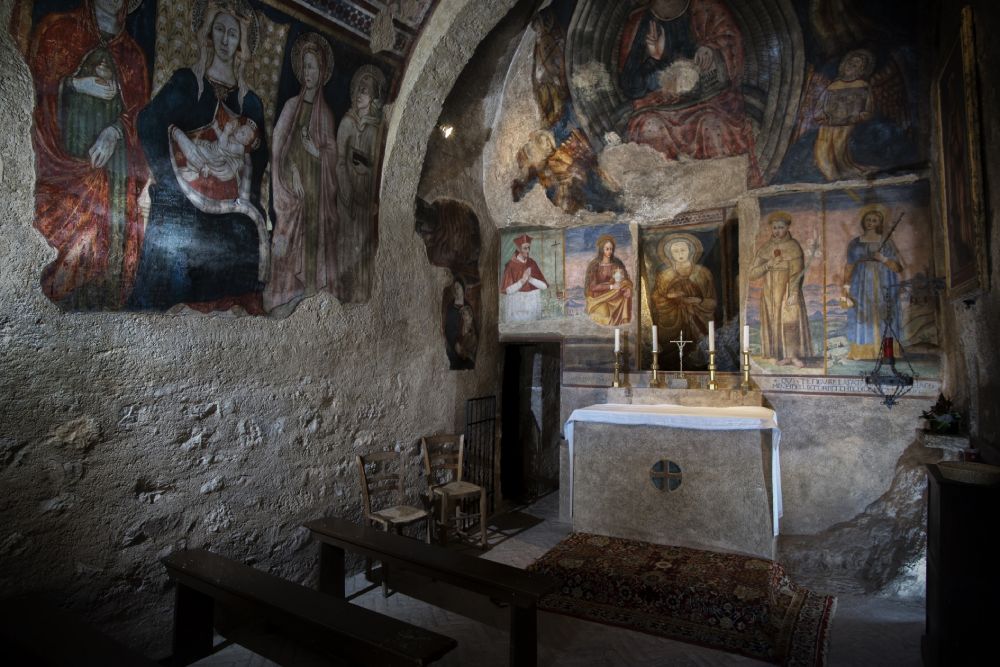The hermitage of Santa Maria Giacobbe in Pale
Amidst the rugged rocky peaks of the Sasso di Pale, a picturesque mountain near the town of Foligno, stands the Hermitage of Santa Maria Giacobbe, a place that captures the attention for its austere beauty and a history intertwined with legend.
Its discreet structure, set in a ravine of bare rock, includes a small church and the surrounding spaces, intended for the hermits’ life. Although access is challenging, the place has an aura of mysticism and spirituality, enhanced by its fascinating history.
Its origin is linked to the legendary arrival of Saint Mary Jacob, mother of the apostle James the Less, one of the three women who witnessed the crucifixion. Tradition holds that after the resurrection, Saint Mary Jacob retreated to one of the caves of Sasso di Pale to embrace a life of prayer and penance. The growing veneration of this place, where people began to recognise the miraculous hand and footprints left by the saint in the rocks of the steep slope leading up to the sanctuary, was the basis for the formation of the cenobitic community that founded the hermitage of Santa Maria Giacobbe in the 13th century, which probably fell under the influence of the nearby Abbey of Santa Croce di Sassovivo.
The hermits lived here until the beginning of the 20th century, when it was gradually abandoned. Only one hermit remained there until 1963, the last witness to the lively devotion paid to the sanctuary, especially by the Pale community, who made pilgrimages to bathe in the miraculous waters collected in the well in the small courtyard inside the hermitage. In particular, the waters were attributed curative powers for rheumatic pains, a common ailment among the inhabitants of Pale and Belfiore, many of whom worked in the numerous paper mills that thrived in the area in the past thanks to the presence of the Menotre waters, remaining active until the early 20th century.
Even today, the Hermitage of Santa Maria Giacobbe is reached in procession on Ascension Day and on 25 May, when the community of Pale returns to venerate its patron saint in this solitary hermitage carved into the rock.
































.jpeg/26712e88-9665-3ae2-a85e-3bd2b38b8a93?width=780)
.jpg/9c821287-b9ac-2175-7491-002f9032c42f?width=780)


